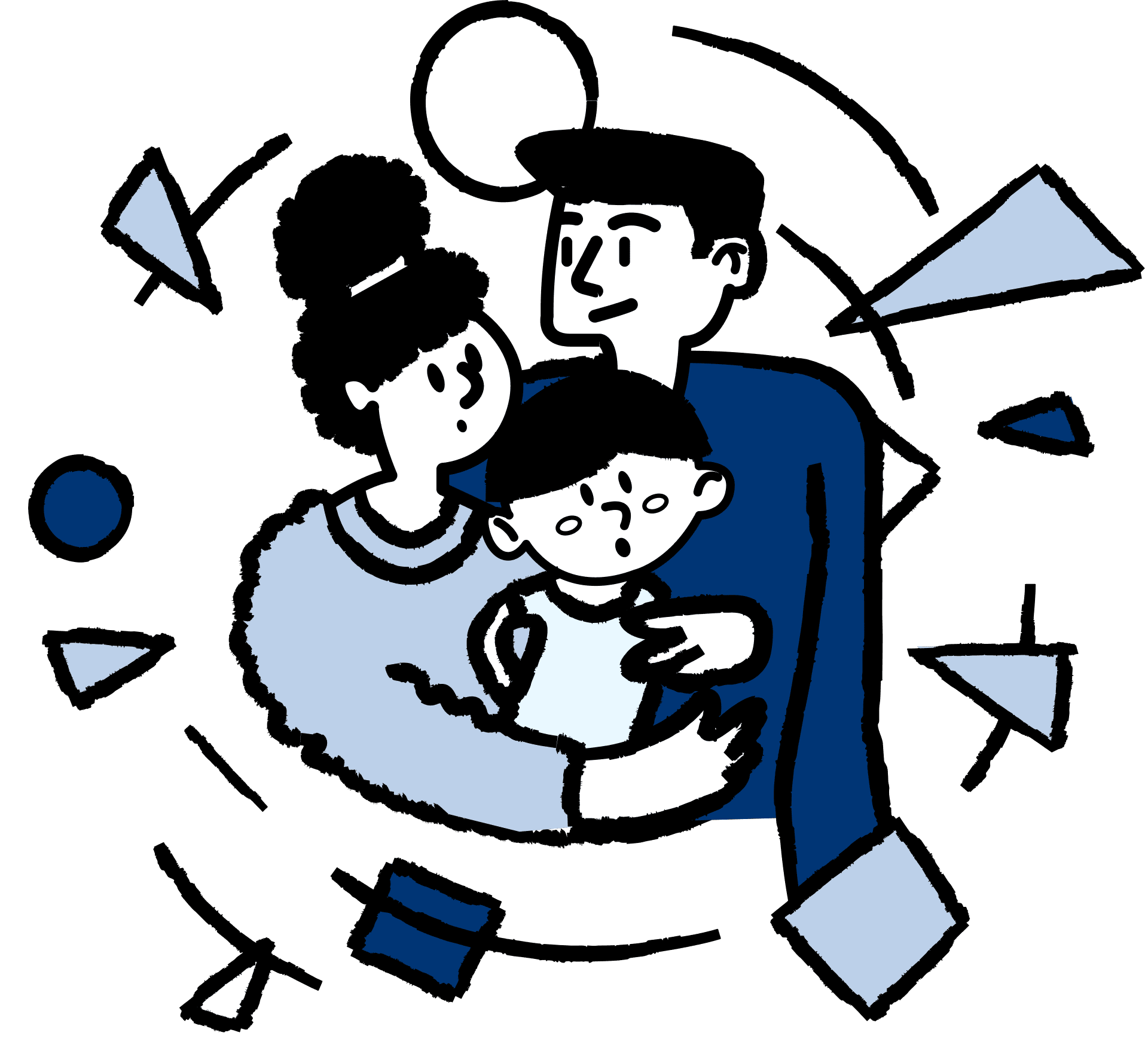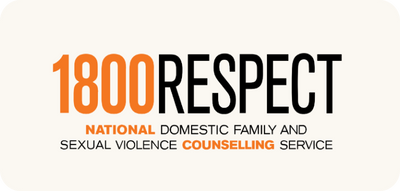Types of domestic and family violence
Domestic and family violence (DFV) can be a confusing term because abuse isn’t always physical or violent. For example, the other person might limit your access to finances, prevent you from contacting family and friends or leave you feeling like you aren’t able to support yourself.
When abuse is physical or violent, it’s nearly always accompanied by other types of abuse. For example, someone physically abusive might also belittle you in front of others, monitor your private messages or put rules around what you can do and when.
It’s helpful to understand what the different types of abuse can look like so you can spot the signs of domestic and family violence.
On this page, you’ll find information on:
- Emotional abuse
- Coercive control
- Gaslighting
- Stalking
- Tech-based abuse
- Physical abuse
- Sexual abuse
- Financial abuse
- Spiritual abuse
- Elder and child abuse.
Scroll down to learn more.
Emotional abuse
Emotional abuse (also referred to as psychological abuse), is when someone intentionally says or does non-physical things to make you feel unimportant, humiliated, degraded, ashamed, and incompetent.
For example, someone who is emotionally abusive might:
- Constantly point out your flaws or mistakes
- Insult, shame, or embarrass you in front of others
- Intimidate, threaten or manipulate you
- Dismiss your achievements
- Say your goals are insignificant or unachievable
- Show excessive jealousy and distrust
- Consciously chip away at your self-esteem.
Verbal abuse is similar to emotional abuse, however, it typically involves yelling, name-calling, belittling, using hurtful, threatening or controlling language or giving you ‘the silent treatment’.
- Is narcissism a form of abuse?
Yes. Narcissistic abuse is when someone constantly uses words and actions to manipulate and control your behaviour and emotional state.
People who engage in this type of emotionally abusive behaviour:
- Believe they are better than others
- Seek constant attention and admiration
- Lack empathy
- Stay preoccupied with their own needs and wants.
This form of abuse often includes coercive control and gaslighting.
Coercive control
Coercive control is when someone intentionally tries to dominate, control, and manipulate you by using a range of emotional abuse tactics aimed at lowering your self-esteem as well as undermining your independence and freedom.
This can look like:
- Threats
- Intimidation
- Isolation
- Surveillance
- Gaslighting
- Monitoring and controlling your online activity.
Abusers typically gain control through a slow and deliberate process. It’s often really hard to recognise because it happens over time.
Here's an example of what coercive control can look like:
At first, the person is kind, respectful, or even over-the-top loving.
‘Love bombing’ is a common manipulation tactic used to build an emotional connection and gain trust. This can look like someone saying they’re interested in the same things you are (even though they’re not), constant attention, generous compliments, and promises of a bright future together. It can also look like someone wanting to move in together or start a family quite quickly.
Next, they begin to display their true self.
Once you’ve become emotionally connected, they may start behaving in ways that are controlling. For example, they might start strategically telling you that you’re too good for your job or that your family and friends are ‘toxic’ and that you ‘deserve better’. As a result, you start pulling away from your source of income and support system.
The more isolated you become, the more control they can have over every aspect of your life.
The goal of coercive control is to make you feel worthless, isolated, and reliant on them for all of your basic needs: food, shelter, money, social connection, etc. They may monitor where you go, who you see, who you speak to on the phone, and who you message online. This behaviour may also escalate into stalking.
Finally, they start using threats and fear to keep you trapped.
In extreme cases, they may resort to acts of physical or sexual violence to maintain control. They may even threaten to take your life or their own if you try to leave.
It is a very common experience to feel ashamed when you start to realise you have been or are being coercively controlled. Often, we hear 'How did I not see it?' or 'What is wrong with me that I let that happen?'.
It’s important to know that it is not your fault. The other person uses this as a manipulative way to control you and you have done absolutely nothing wrong. Nobody deserves to be treated this way.
Are you a man concerned about your behaviour?
If you’re a man using controlling behaviour in relationships and are here because you want to explore options for changing your behaviour, you can contact Don't Become That Man (1300 243 413) between 2pm and 7pm Monday to Friday.
Gaslighting
Gaslighting is when someone maintains power and control by making you question and doubt your memory, judgement or sanity through psychological manipulation tactics.
These include but are not limited to:
- Blatant lying
- Denying or forgetting facts you know to be true
- Trivialising serious conversations
- Challenging your version of events
- Withholding information or strategically selecting what parts to give you
- Twisting facts
- Changing the subject
- Deflecting responsibility
- Shifting blame onto you or others
- Accusing you of being too sensitive/emotional
- Saying they were ‘just joking’ after harmful behaviour
- Flipping the script, leaving you looking or sounding like the one who’s being confusing, controlling, abusive or violent.
When you’re being gaslit, it can leave you feeling like you’re living all alone in another world. You may feel convinced that those around you think you’re ‘unstable’ or ‘strange’, just like the abuser wants you to believe.
As a result, you might be struggling to know whether or not what you’re experiencing is actually gaslighting.
One of the best indicators that someone is gaslighting you is how you feel.
- Gaslighting can leave you feeling:
- Confused, frustrated, and like you can no longer trust yourself
- Like your feelings and emotions aren’t valid
- Insecure and unsure of whether you’re judging the situation correctly
- Unfairly blamed for or accused of things you didn’t do or say
- Guilty, ashamed, and responsible for things you didn’t do or say
- Like you’re constantly being told you’re over-reacting or acting crazy
- Afraid to speak up or share your feelings in the future
- Like the person always has an excuse for their hurtful behaviour
- Unsure of where you stand with the person
- Isolated and lonely.
Recognising gaslighting behaviour is important in rebuilding and protecting your self-esteem and independence.
By regaining your confidence, it can be easier to reach out for support for getting out of the abusive relationship.
If you’re questioning whether or not you’re experiencing coercive control or gaslighting, it’s important to lean on others.
Remember, the other person's goal is to make you doubt yourself. Speaking with an 1800RESPECT counsellor who understands gaslighting behaviour or someone you trust can help you figure out the best way forward.
If you don’t feel like you have someone to call at the moment, you can contact Lifeline 24 hours a day, 7 days a week via 13 11 14, text, and chat.
If life is in danger, call 000.
Stalking
Stalking is when someone repeatedly contacts, harasses, follows or monitors you in a way that makes you feel uneasy, afraid or unsafe. These behaviours are usually intended to cause you to feel like you have no power or control.
Stalking often occurs after an intimate or family relationship has ended but can also occur when you’re still in a relationship.
In some instances, you might not know the full extent of how you’re being monitored by the person stalking you. You may not even be aware it’s happening.
No matter the circumstance, being stalked can be distressing and extremely dangerous because a stalker’s behaviour often gets more intense over time and can escalate quickly.
- Physical stalking can look like:
The other person ...
- Loitering outside your home, workplace or school
- Following you on foot, by car or via public transport
- Frequently showing up at your workplace, school, social events, gym or in your neighbourhood
- Sending or leaving unwanted notes, letters, or gifts even after you’ve told them to stop
- Publicly heckling you
- Making threats or intimidating gestures towards you
- Following, intimidating, threatening, or heckling your friends, family, and colleagues/classmates.
- Tech-based stalking (cyberstalking) can look like:
What to do if you think you're being stalked
Being stalked can be a confusing experience and leave you with thoughts like ‘Maybe it’s just a coincidence that they’re here’ or ‘Will the police even believe me?’
It might not feel like it right now but there are people who can help and who want to help. And no matter what your stalker has made you believe, it’s not your fault.
When in doubt - trust your gut. No matter how subtle the behaviours might feel, you must take action if you think you’re being stalked. In Australia, stalking is considered a form of domestic and family violence and is a criminal offence.
You can take action by:
- Contacting the police. On top of being able to help in an emergency, they can assist with filing charges or applying for a personal safety intervention order. You can call 000 or contact your local police station.
- Calling 1800RESPECT (1800 737 732) for advice and further referrals
- Documenting the stalking by printing or saving emails, texts, phone records, and times/dates physical contact was made. Click here for tips on how to do this safely.
Tech-based abuse
Tech-based abuse (also referred to as cyber abuse) is when someone uses the Internet or other electronic means to gain power and control over you.
Tech-based abuse can look different for everyone but can involve the other person:
- Harassing or threatening you online or with a digital device
- Sharing or threatening to share an intimate image or video of you online without your consent (this is also known as image-based abuse or ‘revenge porn’)
- Cyberstalking (see our stalking section above)
- Controlling your online communication
- Restricting or controlling your access to devices and online accounts
- Financially abusing you using technology.
Click here to learn more about how technology can be used in DFV.
Physical abuse
Physical abuse is when someone intentionally hurts you by causing harm to any part of your body. This type of abuse can lead to minor or serious injuries, and in extreme cases, death.
Physical abuse frequently involves hitting, kicking, shoving, and choking. However, someone physically abusing you may also:
- Cause burns to your body using fire or chemicals
- Pull or cut off your hair
- Lock you inside a room or vehicle
- Physically restrain you by tying you up or other means
- Prevent you from accessing medical advice and care
- Give you medication/drugs that make you sleepy, sedated, unable to think clearly or struggle to move your body
- Force you to consume drugs or drink alcohol
- Deny or limit your access to food and water
- Destroy, hide, or take mobility and health equipment such as wheelchairs and eyeglasses
- Force you to be nude or prevent you from wearing weather-appropriate clothing.
It doesn’t matter how someone is physically abusing you or what they’re saying to justify their actions, it’s never okay.
It’s also quite common for someone who's physically abusive to apologise for their behaviour and promise to never do it again. This pattern can lead to a cycle of abuse. Learn more on our DFV signs and effects page.
Sexual abuse
Sexual abuse is when someone makes you engage in sexual acts you’re not comfortable with or without your consent.
For example, someone sexually abusive might:
- Force you to have sex, even when it’s causing you pain
- Have sex with you when you’re asleep or unconscious
- Make you engage in sexual acts with other people
- Shame or belittle you into performing sexual acts
- Threaten that they’ll ‘need to cheat’ if you don’t give them what they want
- Refuse to wear a condom or practise other types of safe sex
- Knowingly give you an STI
- Control reproductive choices such as hiding your birth control or forcing you to have an abortion.
Sexual abuse can happen to anyone and isn’t always between intimate partners. For more information on what a healthy sexual relationship should look like, you can visit Beyond Silence.

“I knew I needed to speak to someone. That was when I called Lifeline. And that phone call changed my life. I'm so thankful that I was able to take that step.”
Financial abuse
Financial abuse (also referred to as economic abuse) is when someone withholds your access to money, controls the way money is spent within and out of the household, and/or refuses to include you in financial decisions.
Financial abuse can occur for many reasons, however, the other person typically uses it as a way to gain or maintain control.
For example, someone who is financially abusive might:
- Restrict your access to bank accounts
- Hide or lie about how your personal or household’s money is spent
- Prevent you from earning an income
- Physically or psychologically keep you from being able to do your job
- Stalk or harass your colleagues as a way to threaten your job security
- Force you to claim government payments for their own use
- Withhold Child Support payments
- Force you to take out a credit card, loan in your name, or be the guarantor on a loan they’re taking out
- Create debt on shared accounts or joint credit cards
- Force you to work in their business without being paid
- Refuse to work or contribute to household expenses
- Fill out fraudulent insurance claims that implicate or impact you
- Forge your signature on financial documents
- Sell your possessions without permission.
Financial dependence is one of the most common reasons people struggle to leave an abusive relationship.
It might feel impossible to leave when your financial security is dependent on staying. However, there are people and support services who can help you find financial support.
You can watch the video below to learn more about financial abuse.
Spiritual abuse
Spiritual abuse (also referred to as religious abuse or cultural abuse), is when someone uses spiritual, religious or cultural beliefs to control, intimidate, or hurt you and/or your family members.
For example, someone who's spiritually abusive might:
- Guilt you into staying in a marriage you no longer want to be in by saying things like, ‘Divorce is a sin’
- Threaten to cut off your access to loved ones if you try to leave the spiritual, religious or cultural group you’re in
- Use spiritual and religious teachings or cultural norms to justify the use of physical and sexual abuse
- Withhold information and twist facts so you can’t make your own decisions
- Force you to raise your kids under spiritual, religious or cultural beliefs and practices you don’t believe in
- Prevent you from returning home to Country
- Prevent you from participating in your spiritual, religious or cultural practices.
- Sometimes, spiritual abuse can involve practices that are illegal in Australia but widely accepted in other countries.
These include things like female genital mutilation (FGM) and forced marriage.
For more information on Australia’s laws regarding domestic and family violence, you can visit the Department of Social Services website and download their Family Safety Pack.
Elder and child abuse
Elder and child abuse is any type of abuse (emotional, controlling, stalking, physical, tech-based, sexual, spiritual, and financial) directed at someone aged 65+ or 18 and under.
Elder and child abuse can also look like:
- Taking control of finances to steal money
- Preventing access to medical help
- Denying or limiting access to basic needs like food, water, and shelter
- Providing inadequate clothing and shoes
- Restricting freedom
- Isolation from family and friends
- Neglect.
These groups are more vulnerable because they are more likely to depend on the other person for food, shelter, hygiene, physical health, money, transportation and social connection. When these needs aren’t met, this is called neglect.
Neglect is the most common form of child abuse. For those 65+, the most common form of abuse is financial.
If you or someone you care about is experiencing elder or child abuse, there are people who can help.
Below are three DFV support services that can provide information and advice. If life is in danger, call 000.
Click here to learn how to report suspected child abuse or neglect in your state or territory.






